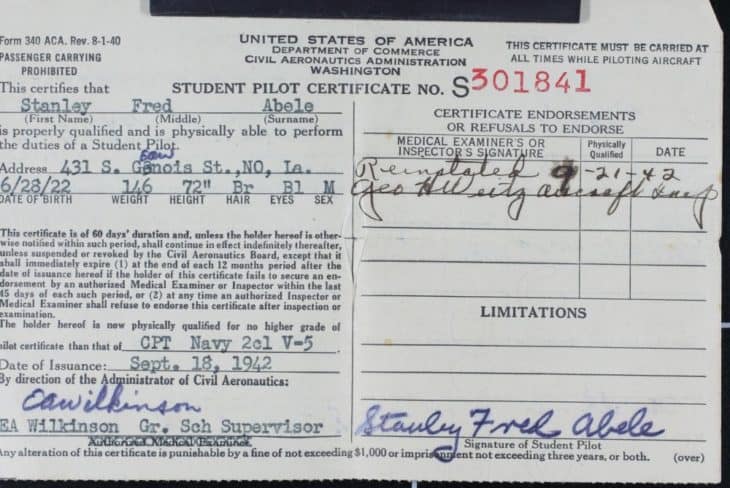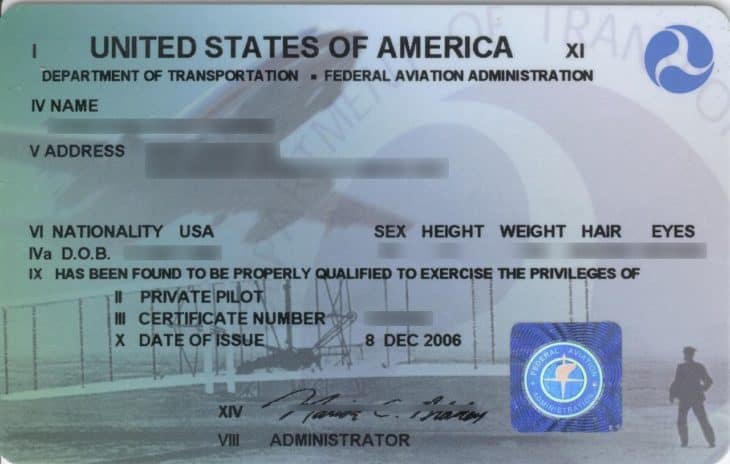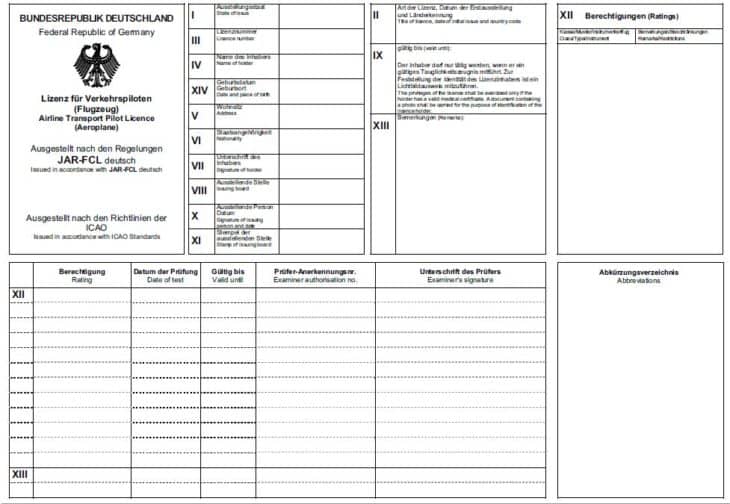Is there anything more liberating than being able to take to the skies in your own private jet? And is there anything more defeating than being grounded by bureaucracy? If you don’t want to be the one that’s grounded, it’s time for you to get one of these 10 types of pilot licenses.
Table of Contents
There are few things more frustrating than having the skills you need to do something but not the certification. If you’re eager to take the skies, the last thing you want is to be grounded because you don’t have the piece of paper you need.
That’s why you need to do everything you can to get the certification you need to fly — but which certification will that be? Just as there are different classes of motor vehicles that require different licenses, the same holds true for planes.
You therefore need to do your due diligence and research which license you need and what is involved in each type of license. Of course, some pilot’s licenses are more popular than others.
So what are some of the most popular types of pilot licenses out there and what can you expect when pursuing each one?
U.S. Pilot Licenses
1. Student Pilot Certificate

The nice thing about pilot’s licenses is that their titles, at least, are usually pretty clear about what they’re for and that’s the case here. If you are just learning how to fly, you need to get a student pilot certificate.
Among the qualifications that are necessary for obtaining a pilot’s license are being at least 16 years of age, being able to read/speak/understand English, and having proof of your identity such as a state ID, driver’s license, or passport.
In all likelihood, this is likely to be the first certificate you’ll need when you start learning how to fly and become a pilot. Student pilots can fly only under limited circumstances, one of which, as referenced above, is the presence of an instructor.
2. Sport Pilot Certificate

So you’ve completed your pilot training and are ready to take to the skies on your own, right? Well, not quite. After all, a student license just allows you to fly with an instructor. You need to get a license that will allow you to fly on your own.
That said, it doesn’t let you fly any old plane. You are limited to light sport aircraft, hence the name. These planes must only have two seats and no night flying is allowed. Moreover, you must first put in 20 total hours of flight time.
In addition, you will have to show that you understand the basics of flight and are able to pass an FAA knowledge test for both general aeronautics as well as light sport aircraft.
3. Recreational Pilot Certificate
Maybe a light sport pilot license doesn’t appeal to you but you still want to take to the skies. If so, a recreational pilot certificate, first introduced in 2014, may be for you.
This license allows pilots to fly planes that are light and powered by single engines, and allows you to do so without attending a flight school. That said, you must still only fly these planes at night and remain within 50 miles of the airport from which you depart.
This is a type of license that is best suited for those who want to do a little recreational flying or farmers who are only interested in doing some light flying for crop dusting and similar purposes within a 50-mile radius of their farms.
4. Private Pilot Certificate
This is easily one of the most common types of licenses for pilots, if only because it is the typical outcome of time spent learning to fly. Where a student license is the plane equivalent of a driving learner’s permit, this pilot license is the equivalent of a permanent license.
Having this kind of license will clear you to use most types of commercially available airplanes for personal use. That said, there are still limitations to this license, such as restrictions on being able to fly during adverse weather.
This license takes a minimum of 40 hours to complete. Among the training that must be undertaken for the completion of this certificate includes at least 20 hours’ worth of training with an instructor.
5. Commercial Pilot Certificate
All of the licenses listed so far are fantastic if you’re just looking to get in a little recreational flying every weekend but none of them are adequate if you want to make some money off your flying skills. In order to do that, you’ll need to obtain a commercial pilot certificate.
It should be noted that this type of pilot license still doesn’t let you fly any type of aircraft for pay. It does allow you to do so in the case of charters, freight planes, tow banners, and similar craft.
In order to get a commercial pilot’s license you must, among other things, be 18 years old, already hold at least a private pilot license, train with an authorized instructor, have the proper FAA medical and knowledge test clearances, and have logged at least 250 hours of flight time.
6. Flight Instructor Certificate

If you love flying and are good enough at it that you can’t imagine doing anything else, you might want to consider a career as a flight instructor, which will require a flight instructor certificate.
This is a versatile certificate that can help you make money via lessons while preparing you to qualify for an airline transport pilot license, with part of the class centered on flight theory.
Among the qualifications for flight instructor certificate are being 18 years old, being able to read/write/speak/understand English, holding a commercial license, and passing a Fundamentals of Instruction and FAA-certified Instructor Knowledge exam.
7. Airline Transport Pilot Certificate

If you want to be one of the people taking to the skies to transport goods and people across oceans and continents, this is the license towards which you’ll want to strive. For most non-military pilots in the United States, this is the top flying license.
This is not a license that one can qualify for overnight. For one thing, you need a minimum of 1500 hours of experience piloting planes. Of those hours, at least 250 of them must be with you as the pilot in command of the vehicle.
In addition, you must be at least 23 years of age and have a commercial pilot license. That said, there are many other requirements in addition to these most basic ones, with several FAA exams and certifications required.
U.K. Pilot Licenses
8. UK National Private Pilot Licence (NPPL)
Let’s switch from the types of pilot’s licenses necessary to take to the air in the United States to those required to be airborne in the United Kingdom. As with their American counterparts, British pilots can and largely must qualify for different licenses in order to fly different planes.
The first among the licenses for which any pilot in the UK must qualify is the UK National Pilot License. This type of license is good to fly vintage and kit-built aircraft within UK airspace.
The craft in question must be UK-registered and remain in UK airspace unless you have a special agreement to the contrary with the country whose airspace you will be entering.
Different classifications can be added to an NPPL license in order to allow you to fly different craft such as microlights, self-launching motorgliders, and single-engine planes.
9. UK Private Pilot Licence (PPL)
If you are looking to obtain a more advanced pilot’s license in the UK, you will want to progress to the UK Private Pilot Licence. The type of credentialing required for this type of license will depend on where you stand with other pilot’s licenses.
If this is the first license that you are obtaining, you’ll need to complete 45 hours of instruction with an instructor, five of which may be completed via an approved flight simulator. 25 hours of that training must be dual flight instruction and 10 hours must be supervised solo flight time.
Among those 10 hours, at least one cross country flight of at least 270km must be included. A skills test will also be required. If you hold an LAPL, the ratio of hours may be different, though the 270km cross-country flight will remain a constant requirement.
10. UK Airline Transport Pilot Licence (ATPL)
If you are looking to take to the skies as a professional pilot transporting goods and people across the UK and beyond, you will need to obtain an Airline Transport Airport Licence. You must be at least 21 years of age to apply.
In order to apply for this type of license, you will first likely need to qualify for others that are stepping stones to this point. For example, you will likely need to obtain a Multi-Purpose Licence first, which serves as an intermediary point between a PPL and this.
If you meet that requirement, you will have to take specialized theoretical, skill-related, and flying exams in order to qualify for your ATPL. In addition, you will also have to pass a medical examination.
References ▾
Related Posts











